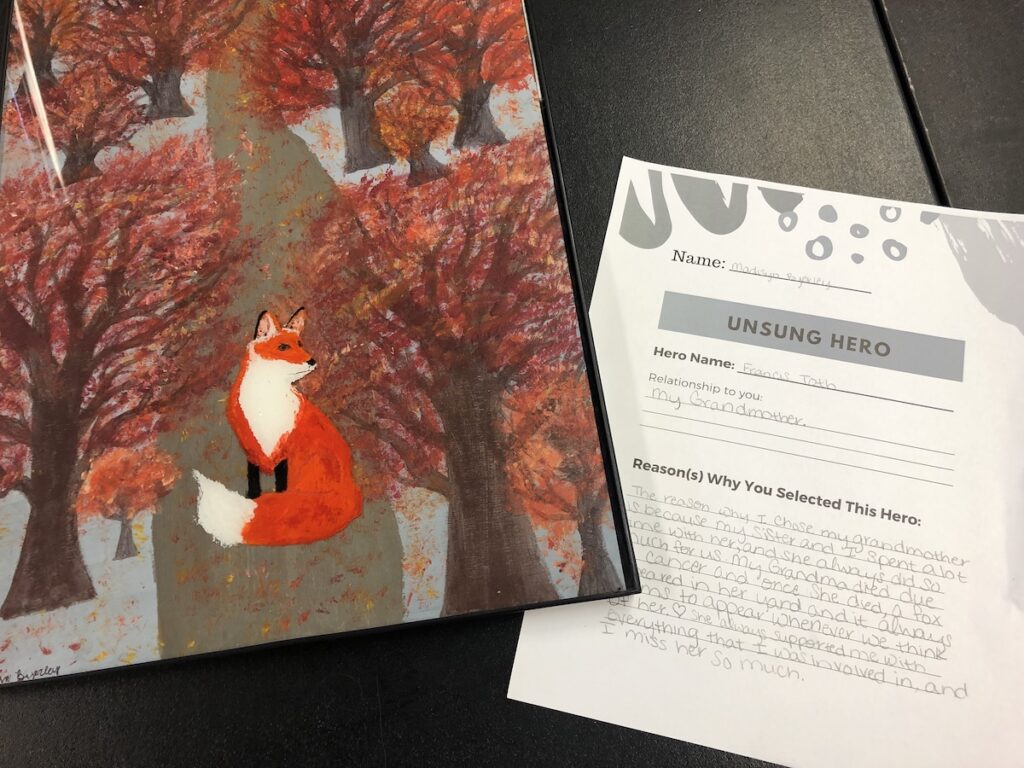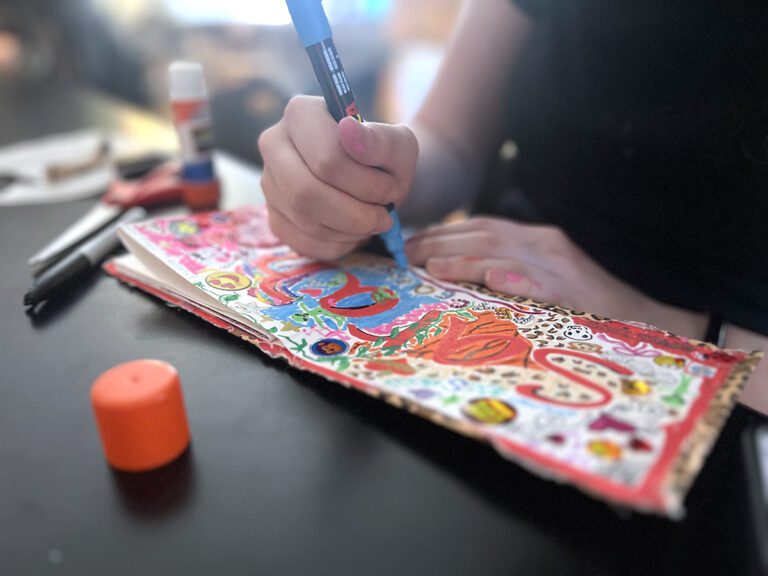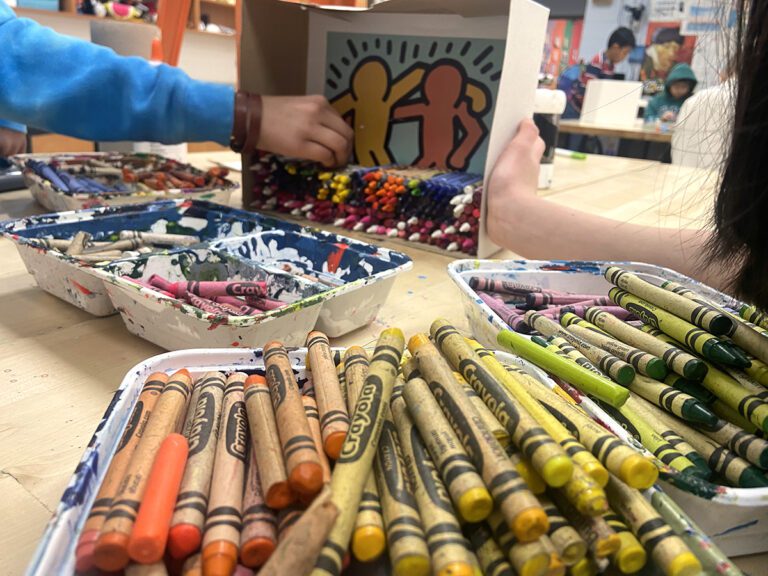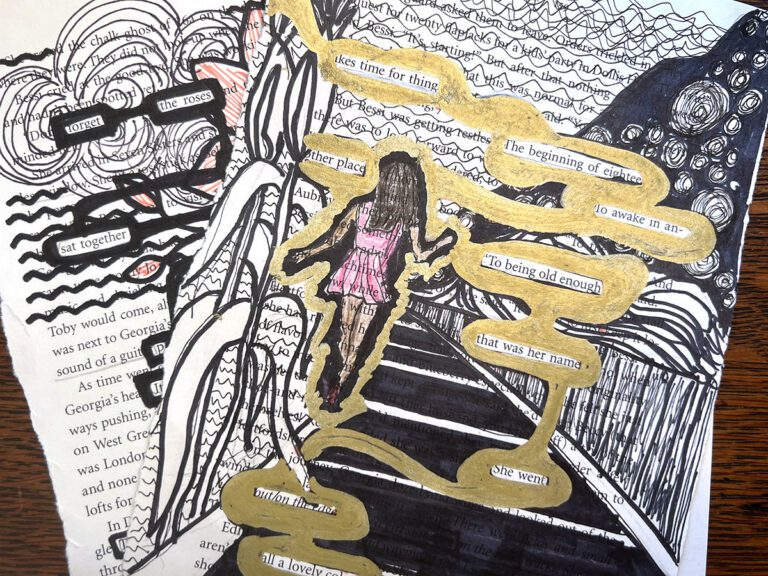Many art teachers use themes in their classroom that relate to a student’s personal identity, hobbies, interests, and experience. This is an excellent way for students to connect to the project and for the teacher to learn more about his or her students. Personal themes in art are significant. Art teachers can also shift students from thinking about themselves and use art to honor others.
Typically when students think about heroes, they think of superheroes and comic strip characters. Some may even think of social and/or political figures throughout history. Many students have created a biography poster or project with an art component at some point in their school career. However, there are not as many opportunities for students to reflect on local heroes that may have impacted them personally.
Art teachers can facilitate this discussion and encourage students to think about who is a hero to them in their daily lives. This may be a family member, a coach, a teacher, or even a friend who has gone above and beyond to make a difference. Have your students define the characteristics of a good hero as a class discussion. Their first instincts may be grand gestures and abilities, but as you work through the conversation, students may find that anyone can be a hero to someone.
Here are 3 ways to honor everyday, local heroes with your students:
1. Veterans Day Collaborative
Veterans are a great group of local heroes to honor in your classroom. Chances are, many of your students have a veteran in their family. They will love sharing stories and having the opportunity to create artwork for their hero.

Art teachers are often asked to create decorations or a display for Veterans’ Day events and assemblies. Rather than print coloring pages, that do not add to your curriculum, try a project that incorporates some skills you want students to master. Color schemes, shapes, repetition, symmetry, and radial balance, are all great design qualities you can demonstrate to students while creating art to honor these local heroes.
Have your students create paper quilt patterns in patriotic colors for a grand display in your school. To keep your classes organized, each section, or grade level, may be responsible for a different set of color scraps.
For example:
- Section A: Use white, light blue, and turquoise
- Section B: Use light blue, turquoise, and dark blue
- Section C: Use dark blue, white, and light blue
- Section D: Use white, pink, and bright red
- Section E: Use pink, bright red, and dark red
- Section F: Use dark red, white, and pink
This helps you have an even distribution of colors and will help you identify which square belongs to which class in the event that someone forgets to write their name on their paper. Ask students to use the scraps to create a paper quilt pattern using symmetry or radial design. Review geometric shapes, and share examples from quilts throughout history. As students collage their pieces together, each square will help build a large “quilt.”
2. Unsung Heroes
Once your students have a strong understanding of hero characteristics, you may ask them to consider heroes they know personally. It’s easy to think of heroes we see portrayed in movies and magazines, but what about the heroes closer to home? Ask your students to think of a hero in their lives who maybe do not often get the recognition they deserve. Explain the term, “unsung hero.” The meaning behind the word unsung is that not very many people know the impact this person has made or is making.

Encourage your students to think of a way to honor their hero through art. This could be a simple portrait assignment, or something more symbolic. Students who are not interested in drawing or painting a portrait may be more interested in depicting their hero through symbolic objects. A coach’s sporting equipment, a father’s cooking utensils, a teacher’s classroom, etc. The finished artwork does not need to represent their hero literally. Have students choose a subject and medium best suited for their idea.
Students may get inspiration for different hero imagery by looking at other young artists’ work on the Lowell Milken Center for Unsung Heroes ArtEffect page. Not every project features a hero’s face, although some do. There are many ways to share a hero’s story through visual art.
When the work is finished, ask students to write an artist statement, explaining the reason they chose their hero. Encourage them to write this as a way to share with others how this person has positively impacted their life.
3. Grid Mural
Whether your school is big or small, chances are there are some pretty heroic individuals who help out in the community but don’t often get any praise. Ask your students to brainstorm who in their school is making a difference. Once the list is narrowed down, have your students split into groups and create a grid mural of each figure. Kansas art educator, Brad Leduc, has been creating this project with students for years.

Place a one-inch grid over a 4×6 photograph of the chosen individual. Give each of your students a 12″ square paper and assign them one of the one-inch sections of the photograph to enlarge. This can be a great exercise in proportion and value. Have students draw their assigned square with a full range of value by shading with pencil, ebony pencil, charcoal, etc.
Once students are finished, the squares can be assembled to create a large mural of their hero. This will make a great display in your school and be a great honor to the hero! Ask the student who initially suggested the individual for this project to write an explanation. Other students can add to the statement if they wish. Display these written statements with the finished art.
Learning and sharing about the heroes close to home who are shaping lives can motivate students to celebrate something positive. Tapping into personal, local, and unsung heroes can have a lasting impact beyond the art room. Try out one of these projects in your art room and see what amazing individual your students can celebrate!
How do you honor local heroes in your classroom?
How do you encourage students to think outside of themselves, and consider others in the community?
Who are your personal heroes in art? Art education?
Magazine articles and podcasts are opinions of professional education contributors and do not necessarily represent the position of the Art of Education University (AOEU) or its academic offerings. Contributors use terms in the way they are most often talked about in the scope of their educational experiences.




